Dieu et Roi!
A French civil war, now largely ignored by Paris, almost fractured the nation's fraternité
When the coloured water cannons exploded on the Austerlitz Bridge and covered the centre of Paris in a Tricolore shroud, the 2024 Olympic audience was treated to an expression of French nationalism – of liberté égalité et fraternité - the like of which has probably not been equalled since the establishment of the First Republic in 1792.
And if the jingoist jamboree had a rather shaky start, well that’s a pretty fair reflection of the birth of France itself.
I wouldn’t want to rain on their parade – especially considering what the weather Gods did as the Olympic fleet crept up the Seine – but as I watched the TV coverage I had strong memories of my years as a part-time resident of a region of France which took a very different view of the supposed fraternité of 1792 and waged a civil war which postponed the true uniting of France by several years.
Now hardly mentioned by French historians or even in French schoolbooks, the War of the Vendee, in the rural South West, was bloodier and cost more lives than the rest of the Reign of Terror which gripped France in a national hysteria, in 1792-4. Modern academics estimate that some 200,000 people died.
On one side there was the Vendean white army, whose cry was Dieu et Roi! - God and King. Their symbol was a simple motif of a cross over a red heart.
In the absence of uniforms, each soldier wore a hand-made patch of the symbol on the left chest of his blouse.
The Government forces, Les Bleus, were altogether more professional and better armed. But they lacked the fervour of the volunteers, who believed they were fighting for the true France, rather than just a soldier’s pay.
So extraordinarily deep do modern memories run of the suppression of the peasant army of the Vendee by the First Republic that in 1992, when France draped itself in the Tricolore to celebrate 200 years of the Republic, celebrations were markedly subdued in Vendean communities. Official buildings all flew the Tricolore and formal events were dutifully held, but there was no passion for the Bi-Centennial. As one of my then neighbours said to me: “We will celebrate on the real day of Union in France in four years’ time”
Frankly the Vendee war meant nothing to me when an old pal and I bought a French farmhouse, halfway between La Roche sur Yon and the glorious sandy beaches of South West France, for our respective families to share. Yet the signs were there as soon as we arrived – quite literally. Monuments to the horrors of a war which wiped out much of a generation, even the women and children as well as their 80,000 menfolk who rose from the fields to fight the Government forces, abound in that region.
The stories are hideous. The first memorial I saw was to the population of an entire village, penned into its church and then burned to death. On visits to Nantes, at the Northern edge of the Vendee, there is plenty of evidence of the carnage. Women and children were crowded into ex-naval hulks on the banks of the wide and lazy Loire and were then towed out into the deep channels and sunk. Every one of them drowned.
One Parisienne commander made a joke of it in his despatch. “These people may claim we are starving them, but they are not dying of thirst. Today we made 1,200 of them drink!”
The shared house we bought - and have since, sadly sold - was a huge success. My pal and I split the time so the old farmhouse was home to each family for weeks each summer, plus other visits throughout the year. As I could then do a lot of my work remotely, I decamped there when I could, our estate car lugging a pre-Internet office load of computer, fax machine and printer down to the remote hamlet where we had found our second home. Our time in the Vendee was much more than fleeting holiday visits and I began to feel very at home there. I looked for books and pamphlets on the region and its extraordinary conflict.
The cause of the conflict wasn’t complex, but the alliance of Vendeans who went to war was astonishing. Elsewhere France was divided between the old aristocracy and the priesthood on one hand and the anti-church intellectuals and disgruntled peasantry on the other.
In the Vendee it was very different. Aristocrats were not absentee landlords. They were popular with farmers and peasants and the accepted pecking order kept the agricultural area prosperous. As a result, the tenants and peasants enjoyed a much better standard of living than elsewhere in France. Both sides were further united by a respect for Monarchy and a devotion to the Catholic church. This was a war for the values of old France against the new Republicans.
When I arrived in the region I found that life in the late 80s and early 90s of the last century was not hugely different from 200 years before. Cow muck coated the roads of our tiny hamlet of maybe a dozen homes. Our neighbours tended tiny fields producing crops of cornichon - small cucumbers for pickling - which they sat on their doorsteps and trimmed before taking a basket or two into nearby Le Poire sur Vie to sell at a market in the square.
The richest farmer in the hamlet, with maybe 50 hectares, grew tobacco which he dried in a huge, rickety pole barn where the large leaves were hung from twine suspended from the roof so the warm Vendee breeze could turn them crackly crisp. Why do you grow tobacco here, when you French prefer American, I asked him. (Contrary to English perception, only a small percentage of French smokers choose Gauloises) His logic was immaculate. “The EEC gives me a grant to grow it – then they send it to Russia.”
Grants were then the chief income of all my neighbours, down to those with the tiniest fields and the least viable crops – the people proud to call themselves paysans.
I never felt a stranger there, despite my hopeless inability to achieve fluency in French. My daughter quickly did and fitted straight in with the village children. So too did my sister’s half-French children who visited often. But, oh what a difference for the unfortunate family who bought a house further out of the hamlet, for nobody seemed to mix with them. “Parisiens” was the sneering explanation from locals.
There was still an unusual political alliance between farmers, priests and paysans back then. Whether it genuinely harked back to the Vendee war I couldn’t say, but you could easily image the uprising which gripped the Region, triggered by the execution of Louis XVI. And close to the house we bought, in a village called Les Lucs sur Boulogne, there is a very modern memorial park, with a sombre granite building where the names of every one of 564 massacred villagers are carved.
Remembering the conflict is a very modern act in this region. On the 200th anniversary of the War, Aleksander Solzhenitsyn, no less, was invited to Les Lucs to give a speech in which he compared what happened to Vendeans to the fate of Ukrainian and Cossack peasants who rebelled against the Bolsheviks, saying that both were destroyed mercilessly by revolutionary despotism.
It’s not a wild comparison. Virtually weaponless, the Vendeans relied on hay knives, scythes and hunting muskets. From nowhere, the movement mushroomed into an army of 80,000 – some of them women dressed as men and many young boys. Some of the leaders were aristocrats who had genuine military experience, such as Louis d’Elbee, a former cavalry officer. But their legendary leaders were people like Jacques Cathelineau, who was a carter, or Jean-Nicholas Stafflet, once a private in the Swiss Guard who the paysans elected as a general.
The Vendee army was irregular and amorphous. Thousands of men would suddenly appear for a battle and almost as quickly fade away to tend their crops and livestock, after the victory. For many months the Whites were hugely successful spreading their control further and further from the farms and salt marshes until their influence reached Saumur and Angers.
Then the war turned against them. Paris had had enough - the guerrillas’ campaign had to be stopped. Republican troops – professional, well-armed and many of them cavalry – poured in to the region. It was vicious and sordid.
Battles flared up for another couple of years, but the Whites were losing consistently and the inevitable end was in sight.
Finally, a General Francois Joseph Westermann – a native of Alsace who had risen from the ranks and revelled in the nick-name The Butcher – was able to report that he had turned the tide of revolt.
“There is no Vendee. It has perished with its women and children under our sword of freedom. I have crushed the children under our horses’ hooves and massacred the women – they will bear no more children. I have not taken a single prisoner.”
In one of those ironies which are the warp and weft of the history of revolutionary France, Westermann was later denounced in Paris and went to the guillotine in 1794.
Watching today’s France celebrate in the international spotlight of the 2024 Olympics I couldn’t help thinking back to my days as a temporary Vendean at the pretty stone farmhouse which had witnessed that forgotten conflict. Still faintly visible, where it had soaked into the stone lintel above the door, was a faded and crudely painted white cross. I have no evidence to the contrary, so I like to believe it was painted there by some forgotten paysan family, lest anybody should doubt their allegiance to Dieu et Roi.
The tragedy of the Vendean conflict – while not widely known outside the region - has provided novelists with material over the years, particularly British writers. Daphne du Maurier dug into her own family’s history for The Glassblowers – which was republished as a Virago Modern Classic. Copies are still reasonably available.
The Victorian writer George A Henty made much of the heroism of the Whites against the power of Paris in No Surrender! A tale of the Rising in La Vendee – copies of the original Blackie & Sons version are available on second-hand sites.




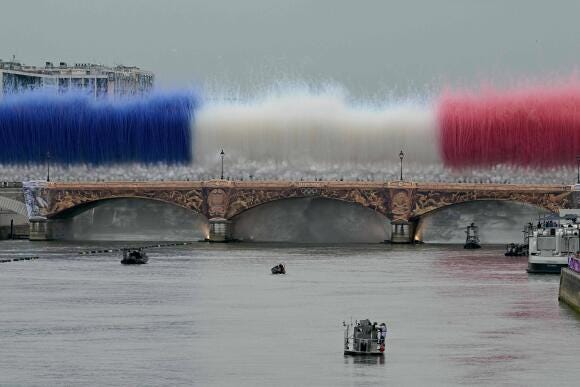
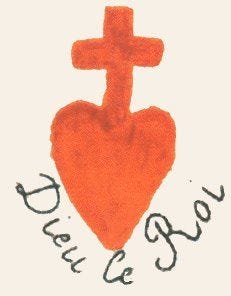


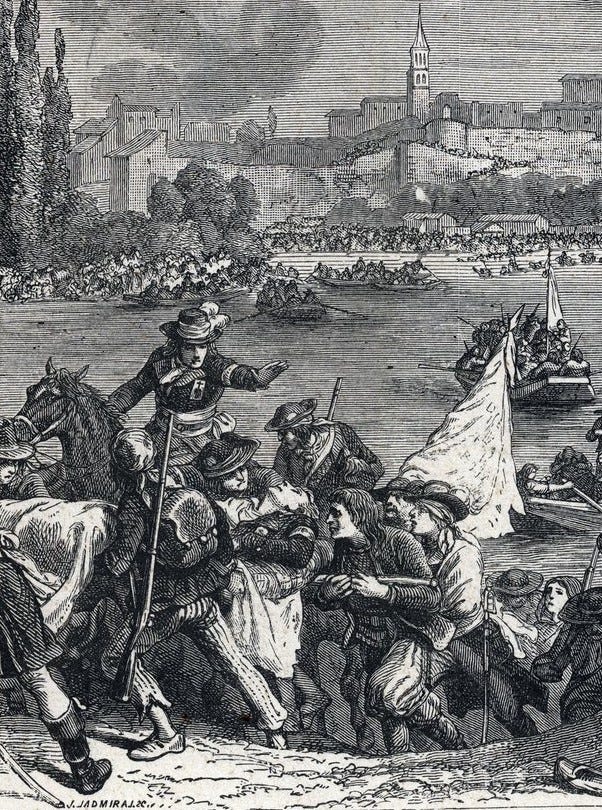

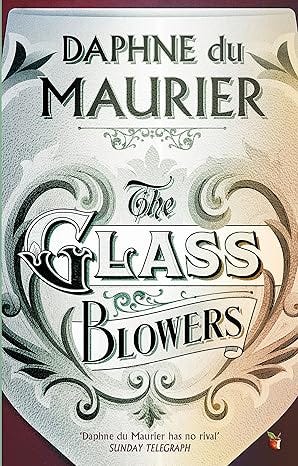
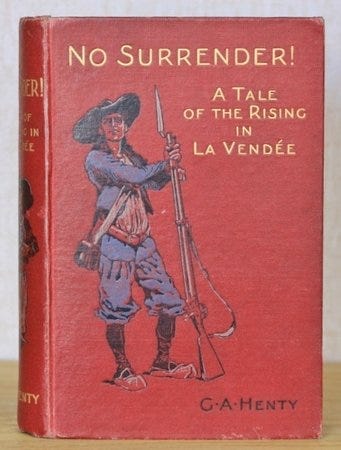
Fascinating history. Thank you. I knew so very little about this civil war.